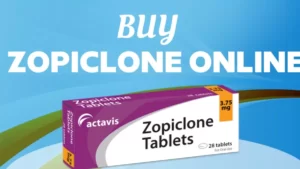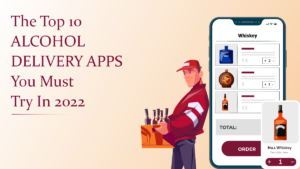Virtual Care (VC) refers to how healthcare professionals contact patients virtually and communicate with them in real-time. This covers sharing information through Tele-Health (Tele-Health is described as the use of telecom and electronic networking systems to offer and facilitate healthcare and wellness services such as medical treatment, delivery and patient learning, patient data services, and self-care.), text messaging, and secure text.
Imagine you want to inform your patients about vaccination clinics, diabetes checks, or the need to update their insurance cards. Telephone Calls or Postcard Mailings are examples of traditional patient outreach. These strategies are expensive, resource-intensive, and often ineffective today. It might be more effective to send an SMS to a particular patient group.
Virtual Care – Described
VC refers to the many ways healthcare professionals contact patients virtually and communicate with them in real-time. This covers sharing information through Tele-Health, text messaging, and secure text.
Imagine you want to inform your patients about vaccination clinics, diabetes checks, or the need to update their insurance cards. Telephone calls or postcard mailings are examples of traditional patient outreach. These strategies are expensive, resource-intensive, and often ineffective today. Maybe it would be more effective to send an SMS to a certain patient group?
A Doctor’s Perspective
Leaving a message asking for a callback, received a voicemail response, and approached the patient again. It is a better use of your staff’s time. Or might sending a solo, protected SMS with the required information be better?
While some healthcare needs an in-person visit, others thrive in a virtual setting. This covers Medicare check-ins, post-procedure follow-ups, wound status, mental health counseling, chronic diseases, weight management, sleep aids, asking brief questions, checking vital signs, and more. The exchange of information is made more accessible through Tele-Health, but SMS and encrypted text messaging offer straightforward inquiries, forms, images, and data.
Need for Practicing Virtual Care
It comes as no surprise that people have grown to value how convenient video chatting with their doctor is. Many patients who like utilizing Tele-Health services say it’s because the visits are more convenient than in-person visits. The majority say it’s because they don’t have to worry about coming into contact with other patients who could be ill.
Americans who prefer utilizing Tele-Health services also like that it’s simpler to make an appointment through Tele-Health than an in-office visit and that post-appointment follow-ups and communications are better organized.
Therefore, two elements that developed during the COVID-19 crisis, convenience and safety, will continue to influence consumer choice beyond the pandemic. These findings demonstrate that Tele-Health will no longer be a “bonus” or “good to have” for practices; rather, it will be necessary to remain in operation.
The approach by which healthcare is delivered will change as a result of VC and intelligent offices. Modern, effective methods are required by today’s healthcare practitioners to increase patient participation, enhance results, and facilitate quicker, more effective interactions between patients and doctors.
Executing a VC tactic inside the practice offers to expand the potential for clinicians to provide the appropriate care at the appropriate time, in the appropriate location, via the appropriate channel, in a thorough and coordinated way.
Develop Your Strategy For Virtual Care
One can easily follow this strategy:
- Select the virtual care platform that is best for your company.
- List the integrations that your company needs.
- Select a forum that has a track record of real interoperability.
- Look for a virtual care service that enhances the experience for all parties.
- Simply, it shouldn’t add to your suppliers’ workload.
- Utilize a patient-centered strategy. Select a versatile virtual care service that won’t demand any more downloads, applications, or log-ins.
Keep in mind that the most significant virtual care systems enable your professionals to connect with patients utilizing the available technology and where they feel most at ease. VC enables healthcare professionals to communicate with patients on a daily basis and without regard to a particular visit or condition. It’s a simple method for involving the sufferer and has a significant effect as we get closer to value-based healthcare.
It’s essential for providers to keep in mind that VC is more than simply Tele-Health. Physicians may become more efficient, interact with more patients, and manage a more lucrative practice by creating a roadmap to use VC both now and after COVID-19, including offering services through video or text. A virtual health plan must be created right now if you want to succeed in the long run and get better results via a more thorough patient experience.
Provide Patients With a Choice.
Giving patients alternatives (like they can choose either virtually or physically) demonstrates your respect for their preferences and experience.
Giving technological alternatives to patients during their virtual conversations with clinicians can increase patient engagement. Like you may enable folks without smartphones to still benefit from virtual care with the appropriate virtual care platform.
Evaluation Of Virtual Care Strategies’ Performance
The success of inpatient virtual care techniques should be evaluated by organizations utilizing measures like:
Access to languages
What proportion of interactions includes language access? How long is the wait time for a translator for patients? How does employing the solutions make the employees feel?
HCAHPS ratings
How do the patient experience and satisfaction levels differ before and after execution?
Pre- and post-implementation readmission rates and the typical duration of stay.
Adherence
Adherence to current laws addressing security, privacy, and linguistic accessibility.
Satiation Of The Care Staff.
Do medical professionals find the technology practical and straightforward to use? Whatever do they choose and dislike, and how many issues be solved?
Conclusion
Despite the epidemic, clinicians may now dramatically expand their telehealth capabilities and start offering better information and communication technologies for patients and other medical teams. This is made feasible by existing technology paired with innovative care techniques.
























+ There are no comments
Add yours